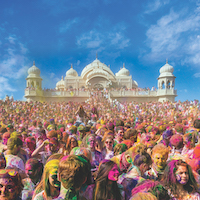How to Cultivate Hindu Culture in America
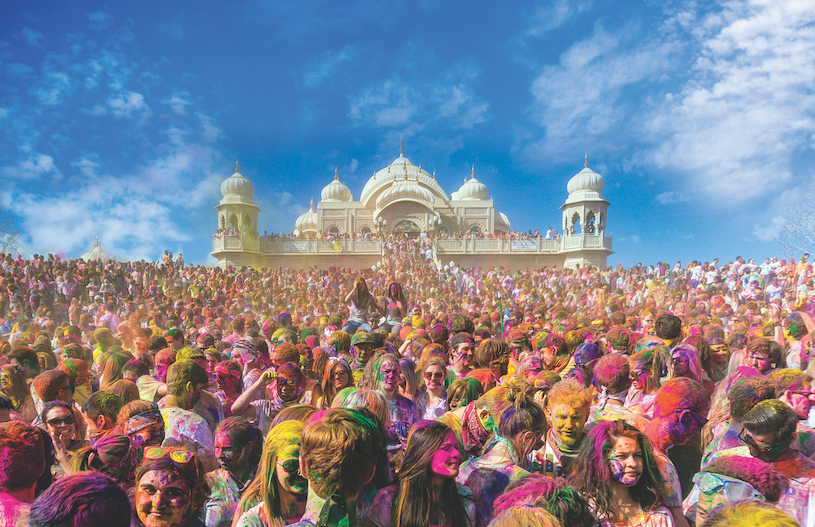
Namaste,
I was recently invited to the HSS Hindu Camp for Children in Bloomington, Illinois where I gave four presentations to the children, along with a few evening talks to the adults that focused on various issues of the Vedic community here in America and how to cultivate their culture while they are here in this country. Of course, many of these points are just as applicable in other areas of the world as well, but this talk was presented here in America. It asks for a serious look at these issues and what can be done about them in order to achieve the ultimate potential of preserving, protecting, cultivating, and promoting the Vedic Dharma. Helping showcase and develop the Vedic Dharma here in America may also be one of the best ways to help save what is left in India, in case the people there see how their own culture is growing in the US, and in case we should ever have to import it back to India from America. There was great appreciation for my viewpoints amongst those who heard it, and there was plenty of conversation on the need to take action.
Hari OM and Hari bol.
How to Cultivate Hindu Culture in America By Stephen Knapp, also known as Sri Nandanandana Dasa
One thing I have witnessed is that 25+ years ago, when Indians were coming to America, they came to concentrate on their careers, not their culture. Yet, many of them have now turned back to their culture and have become better Hindus than if they might have been had they stayed in India. Some may have realized that the American dream is not all it’s cracked up to be. Or, more simply, some have returned to their roots in order to feel more complete and fulfilled. Some may feel that it is better to still maintain a strong connection with their Vedic traditions. It may also be because they want their children to be brought up in the culture of their homeland. So, many of them have now reconnected with the spiritual customs and traditions of Vedic India.
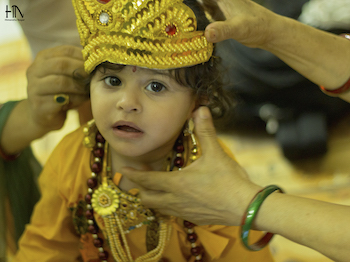 However, a problem that many Indian Hindu families are facing is that many of their children growing up in the West are losing interest in their cultural heritage. That may partly be because their parents don’t show enough interest, this resulting in a less-than-ideal impression of the value of Hindu culture being passed on to their children. But, it is also encouraging to see that those children who do take an interest are often becoming more dedicated Hindus than their own parents! Yet, we can see that this is often a matter of association, who the children pick as friends and how they learn about what Vedic culture or Sanatana-dharma really is. Therefore, the children have to be guided by proper training, proper association, and proper observance of Vedic traditions. This is also part of forming the proper samskaras in the minds of the children. And isn’t this what we are meant to do anyways?
However, a problem that many Indian Hindu families are facing is that many of their children growing up in the West are losing interest in their cultural heritage. That may partly be because their parents don’t show enough interest, this resulting in a less-than-ideal impression of the value of Hindu culture being passed on to their children. But, it is also encouraging to see that those children who do take an interest are often becoming more dedicated Hindus than their own parents! Yet, we can see that this is often a matter of association, who the children pick as friends and how they learn about what Vedic culture or Sanatana-dharma really is. Therefore, the children have to be guided by proper training, proper association, and proper observance of Vedic traditions. This is also part of forming the proper samskaras in the minds of the children. And isn’t this what we are meant to do anyways?
One thing that we should realize, while we live and grow in America, is that the way things are going in India, we practically have more freedom to practice the Vedic culture and its traditions in America than we do back in India. I could certainly elaborate on that point, but I have already done so in other articles that you can read on my website ( https://www.stephen-knapp.com/ ) . So, we need to know how to utilize this freedom that we have.
Secondly, we need to know that America is a prime location where we can work together for cultivating as well as protecting and preserving the Vedic tradition. But we need to base this cooperation beyond the considerations of caste or ethnic differences, those labels of the body. We may call ourselves Hindus, and then Indians; but how many times do you call yourselves Gujarati Hindus, or Bengali, or Marathi, or Tamil Hindus, and so on? Such temporary distinctions of the body are taught in the Vedic texts to be but part of the illusion. And we should not want to remain in such illusions; such maya. The whole basis of the Vedic spiritual process is to raise ourselves out of such illusions and recognize our higher spiritual potential as spiritual beings. We are actually the spirit soul within whatever kind of body we may have.
America can be the best place for this to happen.
Yet, this is one of the problems that we see in India: There are so many groups that have similar goals and interests for the benefits of the culture and country, but there are so many differences between these groups based on superficialities of the body that they cannot unite and become a strong federation; a powerful organization that can determine its own fate or the future of the country. If anything, so many associations in India still fight with one another and, thus, weaken each other to the point of becoming incapable of performing any worthwhile actions that will make a real difference for the unity and future of India and its culture.
This is the same sort of weakness shown during the past 1000 years when invaders came into India. Although sometimes few in numbers, they took over parts of the country without much resistance. This was due to a lack of unity amongst the princely states. It was their inability to support each other or to come to one another’s aid that allowed for their defense system to become so poor that in the end, they could not repel their invaders. So we have to ask ourselves, are we going to continue the same pattern? Are we going to sit back and criticize others and what they have done and point out what they should have done – while we do nothing? If we do, then there is no doubt that we are already finished. It is only a matter of time before we and the Vedic system will become so reduced that it will fade from the world, like other cultures that have been reduced to being mere museum pieces. We have to rise above that.
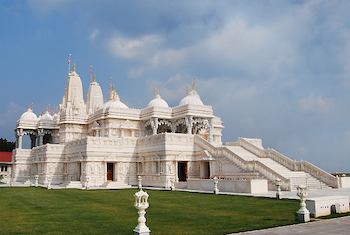 Some of you will say that I’m being overly dramatic and that the Sanatana-dharma is eternal, so that will never happen. In response to that, I will only ask: Haven’t you honestly read the Bhagavad-gita? Haven’t you read one of the reasons why Lord Krishna appeared in this world? It was to revive the Vedic traditions and its teachings, which had become lost – faded from what it once was. So, are we going to allow that to happen? Are we going to simply wait for someone else to take up the reins to lead us, to protect and preserve the culture, or to bring it back to its former glory the way it used to be?
Some of you will say that I’m being overly dramatic and that the Sanatana-dharma is eternal, so that will never happen. In response to that, I will only ask: Haven’t you honestly read the Bhagavad-gita? Haven’t you read one of the reasons why Lord Krishna appeared in this world? It was to revive the Vedic traditions and its teachings, which had become lost – faded from what it once was. So, are we going to allow that to happen? Are we going to simply wait for someone else to take up the reins to lead us, to protect and preserve the culture, or to bring it back to its former glory the way it used to be?
So, as American Hindus, we should first recognize ourselves as spiritual beings, followers of the Sanatana-dharma. Only after that should we recognize each other as Indians, or as being connected with India. We must first see ourselves as spiritual beings, and then see everyone else in the same light – the light of spiritual knowledge. Then, we can come together and cooperate in real unity; real concern for protecting and preserving the Vedic Dharma – not only for ourselves, but for our families, our children, and for the many generations to come. Even my own spiritual master, Srila Prabhupada, once asked us: What is the use of being Americans if you cannot do something significant?
Let us make sure that the Vedic tradition and its spiritual knowledge is not an eternal yet hidden philosophy that has been forgotten or difficult to attain and utilize. Let us make sure that it remains a guiding light for everyone, all over the world, and that it remains accessible for those who seek deep spiritual knowledge, over and above mere pious religion. That is the way it is meant to be. I have often said that Vedic culture is the last bastion of deep spiritual truth. If we lose that, then all of humanity is in for a very dark future.
However, as Americans of Indian descent and followers of Vedic culture, we must also never forget that India is the homeland of our Vedic tradition – and that that is what it must always remain. We must protect that as well. But how can we use our freedoms here in America to do that? What do we do?
AN EIGHT-POINT ACTION PLAN
FIRST
As I mentioned, we need to respect each other as spiritual beings, followers, and friends on the path of the Vedic Dharma. We can become encouraged by coming together and associating in this way, and seeing the positive effects of the tradition on each other. Then, we must cooperate and work together to assist ourselves and our friends along this path. There are many ways (of which I will mention only a few here) in which we can do this.
SECOND
We utilize our freedom to assemble and rejoice in the Vedic festivals and celebrations that we can observe. This makes way for the joys of life. It also creates many samskaras of these happy times in the minds of our children. These memories will last for many years and will propel them to do the same with their children. This is love. This is what we want – love for God and love for each other as parts of God.
THIRD
The Indian community in America is one of the wealthiest. According to the Vedic Dharma, such wealth is a tool to either help spiritualize your life, or build a crown on your head – the weight of which will only drag you down into darker realms in the next life if you are a miser. Also, there is nothing more beneficial than to help secure the spiritual progress of others, whoever they may be. We may start with our own families; but when we contribute to the construction of new temples, and to the maintenance of listing temples and to the programs and festivals held at such temples, this is certainly the most beneficial use of our money and our earnings. And when used in this way, it purifies the time we spent in earning it, and turns our occupation into karma and bhakti yoga. Furthermore, you then share in the good fortune of the spiritual progress made by others through your contributions. It is similar to a network marketing program where the more people you sign up under you and help them be successful, the more you also earn. But these earnings are spiritual, so this goes into your spiritual bank account. Thus, the more people who participate in any programs you arrange or support (such as those at a temple), the more spiritual credit or punya you get for the spiritual progress they make. Moreover, this can go on for generations, long after you have left this world, depending on what it is that you arrange or establish. Is there a better way to leave your mark in this world than in benefiting others as well as yourself in such a way? And if you cannot start or do your own projects, at least support those people who are already working in this way. This is far better than dying with large bank accounts that you cannot take with you into the next realm.
These days, we can see Indians in America of all status who do anything and spend all kinds of money so their children can go to the most prestigious or most costly universities available. It is almost like a competition as to who can boast the most about what colleges their children are going to. And what happens? Much of the time, their children become wealthy materialists with little or no interest in the culture or in following the Vedic Dharma. They earn lots of money, only to spend lots of money on temporary, bodily pursuits. But why not? This is the way they were pushed by their own parents, so what else can we expect? Or, people spend lavish amounts of money on weddings. It is a grand festival; but within a few days, it’s all over. And what has the money really done, other than provide something more to boast about? Is this the best we can do? I don’t think so. Why not be a little more moderate and spend more money for the purpose of really benefiting others, including future generations, by giving for the preservation of the Dharma?
FOURTH
Educating yourselves and the youth in the Vedic customs and its philosophy is of extreme importance. The number one reason why Hindus convert to other religions is not because the other faiths are so much more organized and well funded, though this may sometimes be a part of it. The main reason is primarily that Hindus are not educated enough in their own traditions and Vedic philosophy. They may go to the temple and do pujas, but they may not even know the significance of them, or the spiritual knowledge that is a part of the Vedic tradition, or the depth of this spiritual philosophy. Thus, it is important that everyone is educated properly. This can be done by holding regular group classes and discussions in the temple. And if this is not so easy, I have seen where people get together on a weekly basis to read, comment on and discuss such sacred texts as the Bhagavad-gita among themselves. This is extremely important so that people, and especially the youth, understand their own culture more deeply and can perceive the profound nature of it. I have already written an action plan with a list of points on how to help make the temples more effective

FIFTH
We may do all of the above, but we also must realize that all we do to preserve and protect the Dharma can not be fully accomplished without its promotion. Yes, we have to promote the good and the depth of this Vedic culture. Such promotion may start amongst other Hindus, or within our family, Indian community, etc. Or it may also be done in ways to share our culture with other non-Hindus who are interested, such as inviting them to a festival, to the temple and showing them around, or just having a lunch with them at the local Indian restaurant and sharing the stories of your own life on how your culture has had positive effects on you. This is easy, there is nothing hard about it. And if you don’t know what to say, then give them a brochure, or a booklet or book that explains the basics of the philosophy so they can start to understand it or look more deeply into it. (And I’ve got plenty of free brochures or booklets on my website that I can send you if you need them.) Basically, whether you like this idea or not, we must learn to promote the values of the Vedic tradition in order to help preserve and protect it, and so others can appreciate it by seeing what it has to offer. This is a reality of these times, and the need for people to understand us. No matter what other religions you see, they all engage in strong promotion in order for people to understand them, or to attract other people to support or be a part of them. Thus, without proper promotion of Vedic culture, the cultivation of it and the protection and preservation of it remains incomplete. If we can present it properly, in a way in which it makes sense to the people, then they will understand it. It’s all in the presentation.
Such promotion may also include advertising the activities at the local temple, or about the festivals that are being held, or that all in the community are welcome to attend. Such promotion may also involve preparing publications, websites, radio programs, and other ways that help people to get to know about the unique and profound characteristics of the Vedic culture. You never know what might happen through such endeavors. You may find others, such as westerners, who want to participate, or even help support the temple, festivals or projects.
To give an example, I was giving a presentation to around 120 people of an interfaith group at the Cincinnati Hindu temple. It was a presentation on how the Divine appears in Vedic art and the various forms and deities of God. Later, as the people were given a tour of the temple and further explanations of the temple deities, so many people came up to me to express how much they liked the presentation and slideshow. But they also would say that though they have been Catholics, or practicing Jews for years, they have never felt a strong connection to their religion. But they were really attracted and felt a kinship with what they were experiencing at the Hindu temple that evening. So, we encouraged them to visit more often and read about the Vedic traditions to learn more about it. This proves that you never know what can happen, and that people from all walks of life can feel attracted. We need to realize how special this spiritual culture is and not be afraid to share it with others.
SIXTH
We must object to all prejudice against Vedic culture and Hinduism in the media. Why are people so easy going about writing and publishing any damn criticism about India and Hindus and Hinduism? Because they know that in most cases, no one and nothing will be done about it. No one will stand up against them. This attitude must change. In America, the free press is for everyone. In other words, you can also write into the editor of any publication to object to something you disagree with. However, the point to remember is that the more who do that, the more effective it is. And this is where group cooperation becomes very important and influential. If someone denigrates a Hindu or Hinduism, it is not so difficult to write a letter and demand an apology. But if that same letter is circulated to a large group, along with the email or address of the editor, and many people start signing it and sending it in, it will flood the editor’s office or email address and certainly get noticed. In today’s world of communication, a program of protest could be put together and accomplished within a few days.
A standard letter could be posted on a website in which blanks are there in the form to fill in for whatever incident is to be described, and then used to send to the editor, writer, publisher, or whoever. This makes it very easy, and less likely that such incidents will go without protest. We need to do things in this way.
We also need to process lawsuits as well. Utilizing part of our money in defense of Vedic Dharma in lawsuits against slander or other crimes against Vedic culture and those who follow it will also help make sure that people become more cautious about committing such acts again. These and other methods need to be taken into consideration to make sure that people and the media realize that Hindus are a force to be reckoned with. American Hindus must clearly understand that they cannot remain silent or wonder who will be the fodder for the next racist policeman or person who wants to take their anger out on them. For too long, Hindus have not been organized and have remained apathetic to what has gone on around them or to them. This needs to change.
SEVEN
This leads to point number seven, in which American Hindus must become politically active. This does not simply mean that you vote, or that you attend fundraisers for your favorite candidate to have a photo with them that you can hang on your wall. How has that helped anything? We need to get more serious. American Hindus can also volunteer in large numbers in political campaigns to show the force that we can have, that politicians realize we are a great force that they will want on their side. But we should also vote as a block. We should look seriously at the issues any candidate is addressing, and then vote for the person who will be best for the interests of American Hindus and relations between the U.S. and India.
Presently, there are also more Indians in America that have been voted into various offices than ever before. Unfortunately, some are converted Christians. But the point is that it is not so difficult to get started. American Hindus can also run for school boards, city councils, for mayor, and on up to state governor. We should see that as not merely a chance to get into office, but a chance to show the influence of Vedic thought and ideas on the issues of the day, and a chance to show the beauty of the Vedic culture. I had a friend who ran for office in Hawaii. He had no money, no influence, but as he appeared on television shows, and in debates, he gained influence and support. He did not win the election, but everyone knew of his connection with Vedic culture and people admired him. If he had continued to run for office in the following elections, he may have won. In other words, it is all positive. We simply have to step out and do it. And if people do take notice, or if we do win, it can be a major step in preserving, protecting and promoting the beauty of Vedic culture, which can also be appreciated and utilized by Americans themselves. Then instead of you wanting to get in a photo with your favorite politician, people will want their photo with you.
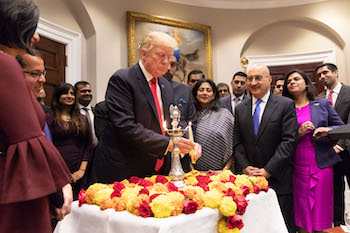 EIGHT
EIGHT
The last point is dealing with interfaith marriages. This is happening on an increasing level. As they say, love is often blind, keeping you from seeing the realities that will become apparent down the road. But statistics have shown that most interfaith marriages dissolve, ending with divorce, especially when the issue of children comes up and the decision has to be made regarding how they are going to be raised, and what religion they will follow. The fact is that most Hindu girls who marry outside the Hindu fold either convert or allow their spouse to have control over the children in regard to their faith. And Hindu boys often do the same thing. Therefore, whenever an interfaith marriage occurs, much of the time you can figure that by the next generation or two, that family will no longer be following Vedic culture. They will be something else, which contributes to what may be viewed as the slow demise of the Vedic tradition. That is why the fourth point about educating yourselves, your children and giving them the right association and friendship through temples and youth or Dharmic camps can be so helpful for them to realize the depth of what the Vedic philosophy has to offer, and to keep them in the Hindu fold. This can help pave the way for them to realize the importance of this to their future, their children, and the future generations of their family if they remain in the Dharmic fold by marrying another Hindu, or someone who wants to follow it.
These are all powerful ways in which the community of American Hindus can work together to cultivate and benefit from the oldest living, spiritual tradition on earth, as well as preserve and protect the Vedic tradition. Let us all help each other do this.
Dharmo Rakshati Rakshitah.
Jai Sri Krishna
 About the Author
About the Author
Stephen has put the culmination of over forty years of continuous research, sadhana practice and travel experience into his books in an effort to share it with those who are also looking.
Cultivate Hindu Culture
Hindu camp for children
Indian Hindu families
Vedic traditions
Sanatana-dharma
Indian community in America
American Hindus
Srila Prabhupada
Vedic Dharma
Cincinnati Hindu temple

